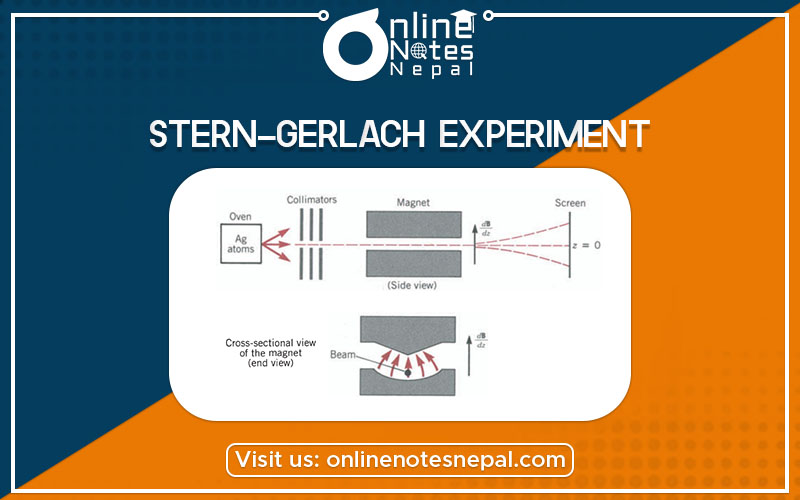Published by: BhumiRaj Timalsina
Published date: 23 Jun 2021

Stern-Gerlach Experiment
Stern-Gerlach Experiment is another experiment that shows the idea of space quantization of the Schr6-dinger theory as being correct although incomplete is the Stern-Gerlach experiment. We know that when a magnetic dipole is placed in a uniform magnetic field B it experiences a torque. However, if the field B is not uniform, the dipole will also experience a net force. The figure given below is a schematic of a no uniform magnetic field where the B-arrows represent separate parts of the magnetic field where the vector sum at any point is the total magnetic field at that point.
Photo
it is clear from the figure that B increases in the z-direction; thus there is gradient dB/dz along the z-axis. It is also clear from the picture that a net force directed upward will act on a magnetic dipole placed in the field. In general, it can be shown that if there is a magnetic gradient along the z-axis the force will be directed along the z-axis and the magnitude of the force will depend on the magnitude of the gradient and on the orientation of ILL with respect to the gradient. The actual value of the force is
Equation
Photo
Classically, Lz can have any value between L and – L; that is, if you send abeam of magnetic dipoles μl through such an inhomogeneous magnetic field B(z), they will experience a force that can take any value between
Equation
In the experiment, Stern and Gerlach sent a beam of neutral silver atoms from a heated oven through a collimator and then through a region with anon uniform magnetic field B(z) with a gradient along the z-axis.
The silver atoms were collected on a screen. Although the atoms were unchanged, they did possess a magnetic dipole. Therefore, the only force acting on them was the one resulting from the inhomogeneity of the magnetic field. Depending on the magnitude of this force (that is, on the orientation between μl and dB/dz), the atomic magnetic dipoles will be deflected as they travel through the magnet. The stronger the force, the greater the deflection, and therefore the farther away from the center they would land on the screen.
Photo
when the magnetic field is off, a thin straight line trace is obtained on the screen which is shown as zero field pattern. when the magnetic field is turned on the trace is divided into two lines.
in the silver atom at the temperature of a few hundred degrees, all the atoms should be in the ground state, which is called the 1s state In this state I = 0, and therefore ml = 0 and μl = 0
If you liked our content Stern-Gerlach Experiment then please don’t forget to check our other topics The Zeeman Effect